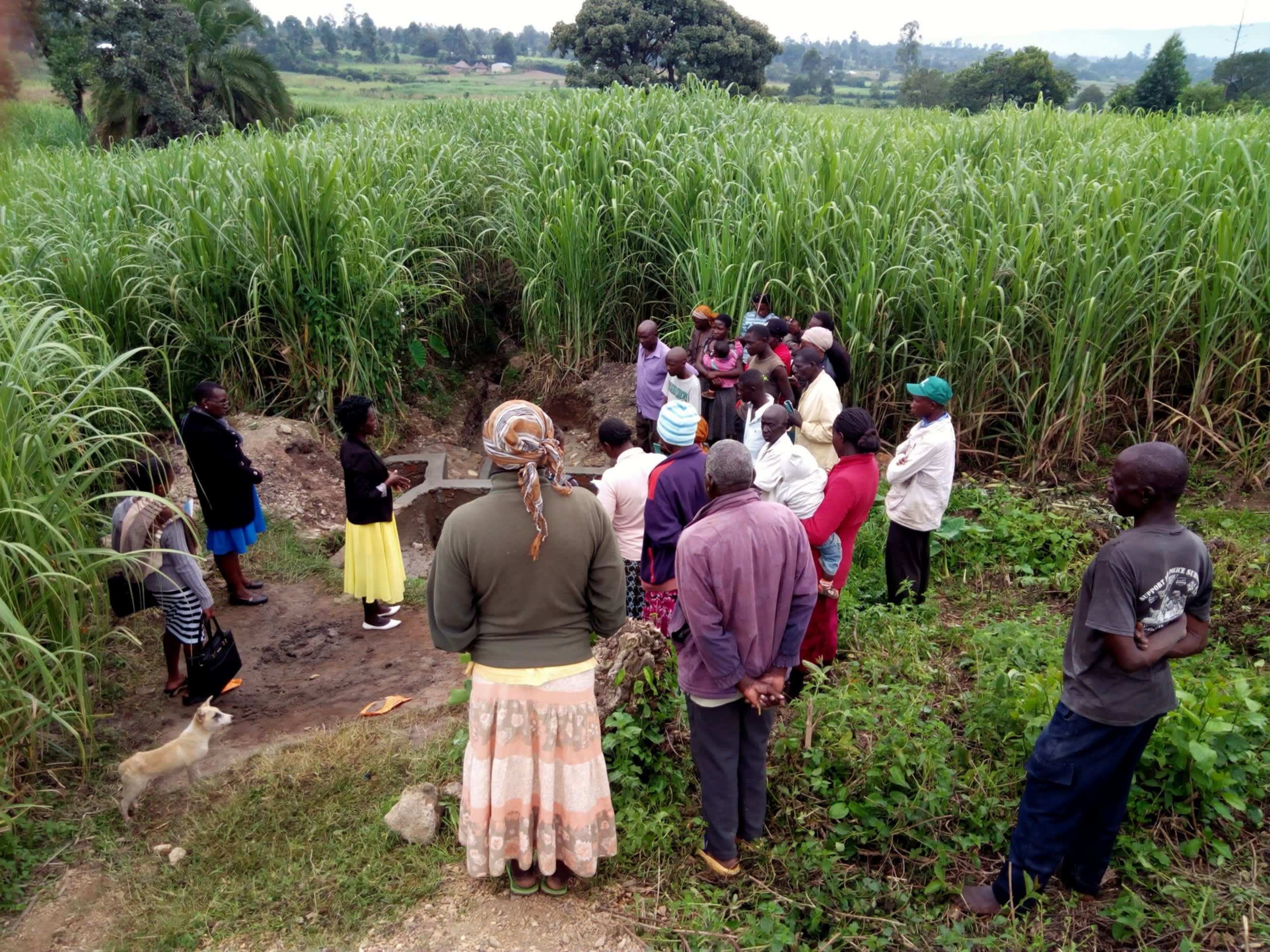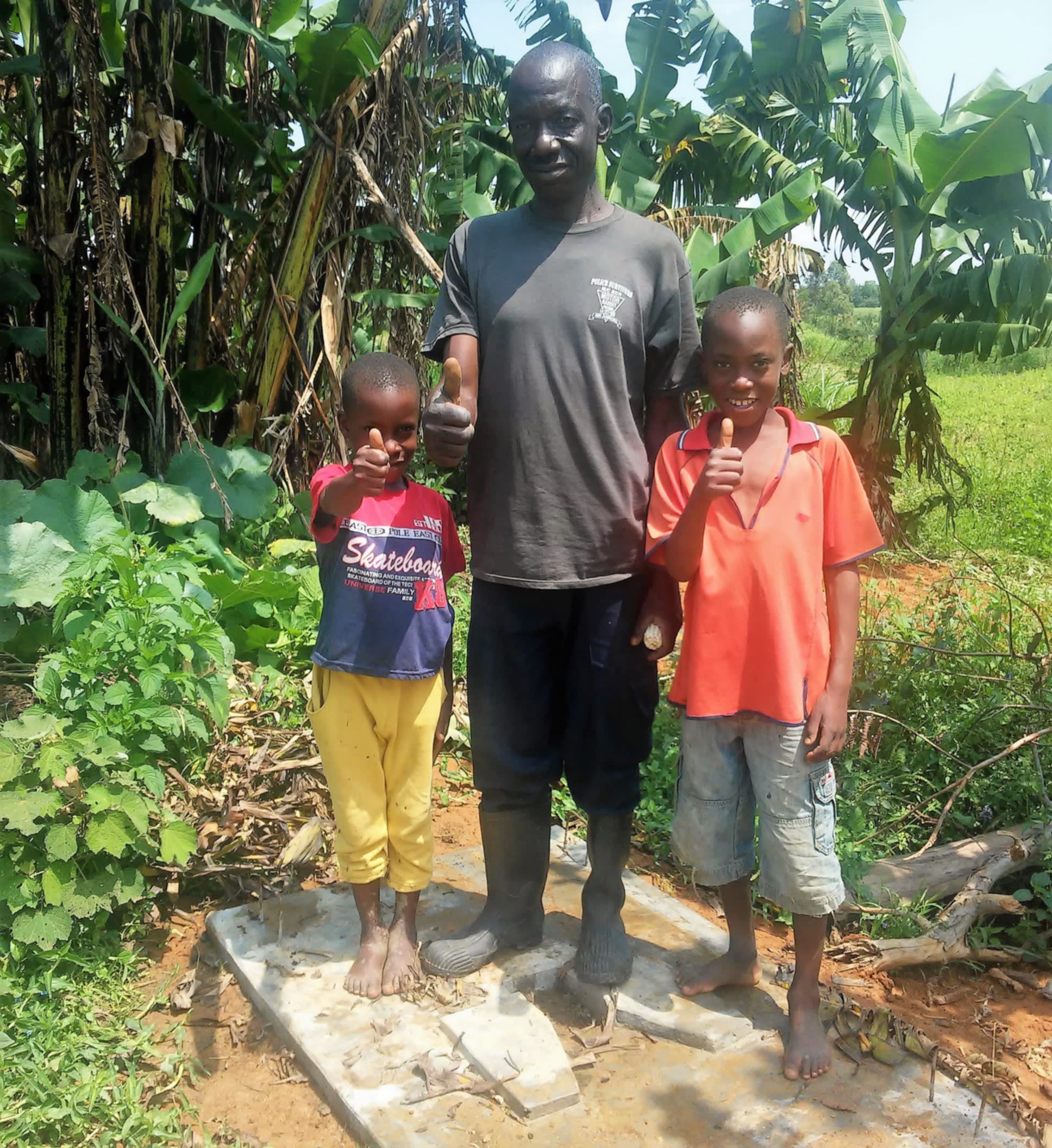This project is a part of our shared program with Western Water and Sanitation Forum (WEWASAFO). Our team is pleased to directly share the below report (edited for clarity, as needed).
Welcome to the Community
The people of Chegulo Community are basically all farmers, most who plant large plantations of sugarcane to sell in bulk to Butali Sugar Company. Others are farmers on a smaller scale who sell foods like maize and vegetables in the local market.
A normal day here starts at around 5:30am when people wake up to work on their farms until about 6am. During this time, the moon is still up and provides adequate lighting. They then head back home to make breakfast and prepare children for school. Once they've seen the children off, the parents go out again to look for odd jobs that will bring in extra income. Dinner is around 6pm, after which they get ready for bed. Since there's no electricity in Chegulo, the day is only as long as the sun is up.
Water Situation
Shakava Spring is one of the main water sources in Chegulo Community. This spring is so dirty that at first glance it looks like a puddle. The water is murky and moss floats on the top. Mr. Shakava himself tries his best to clear the water's surface on a daily basis, but more contaminants are washed into the water whenever it rains.
Community members normally bring two containers to Shakava Spring; one small cup to fill a larger jerrycan. A small cup is useful to bail water with because one can avoid the waste floating in the water. There's no storage at home, so water is kept in the same container until used.
A safe water shortage for this community translates to limited hygiene and sanitation for both the elderly and young people. They end up looking for ways to save the little water they manage to collect; resulting in a number of diseases that need to be treated with the little money they earn.
Sanitation Situation
Less than half of households that rely on Shakava Spring have latrines. These are built in the traditional way using thatched sticks filled in with mud, with sugar sacks hanging in the doorway. The pits are covered with wooden slats that the user is supposed to balance on. These are prone to rot and are immensely difficult to clean.
Because of these poor conditions, open defecation is an issue in Chegulo; people prefer the privacy behind buildings or bushes over dangerous, dirty latrines. Since open defecation endangers the entire community, everyone should support each other in the building of newer, safer latrines.
Mr. James Andanje explained a little more about conditions in Chegulo, saying "The people here use whatever little water they get for cooking [and drinking], this is however limited by the fact that this water is not clean at all - thus leading to diseases such as diarrhea, amoeba and coughing too, since just a handful of them [community members] boil their drinking water. With this kind of trend, people hardly consider sanitation concerns such as hand-washing and even cleaning their toilets and clothes. We therefore need people like you to intervene and enlighten us more!"
Plans: Hygiene and Sanitation Training
Community members will attend hygiene and sanitation training for at least three days. This training will ensure participants are no longer ignorant about healthy practices and their importance. The facilitator plans to use PHAST (Participatory Hygiene and Sanitation Transformation), CLTS (Community-Led Total Sanitation), ABCD (Asset-Based Community Development), group discussions, handouts, and demonstrations at the spring.
Training will also result in the formation of a committee that will oversee operations and maintenance at the spring. They will enforce proper behavior around the spring and delegate tasks that will help preserve the site, such as building a fence and digging proper drainage.
Plans: Sanitation Platforms
On the final day of training, participants will select five families that should benefit from concrete latrine floors.
Training will also inform the community and selected families on what they need to contribute to make this project a success. They must mobilize locally available materials, such as bricks, clean sand, hardcore, and ballast. The five families must prepare by sinking a pit for the sanitation platforms to be placed over. All community members must work together to make sure that accommodations and food are always provided for the work teams.
Plans: Spring Protection
Fetching water is predominantly a female role, done by both women and young girls. Protecting the spring and offering training and support will therefore help empower the female members of the community by giving them more time and efforts to engage and invest in income-generating activities.
In addition, protecting the spring will ensure that the water is safe, adequate and secure. Construction will keep surface runoff and other contaminants out of the water.



 Rehabilitation Project
Rehabilitation Project



























